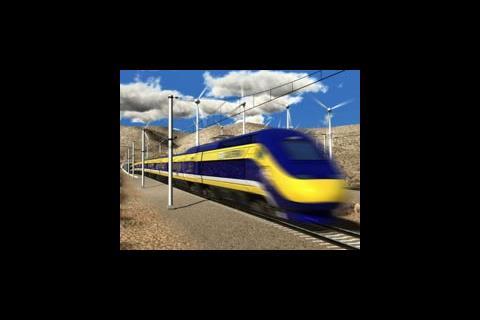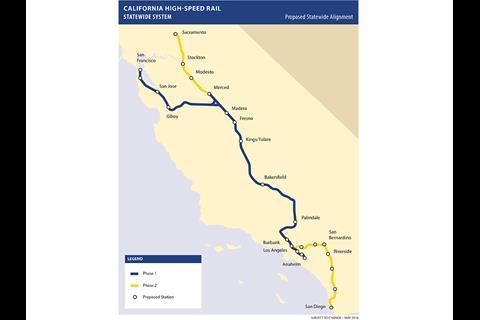USA: California High-Speed Rail Authority has published for public consultation a draft 2018 business plan which ‘acknowledges and responds to changed circumstances and emphasises a new way of doing business moving forward’.
CHSRA said the draft plan ‘transparently identifies the project’s challenges’, which include putting back the completion date and cost increases ranging from 20% to 35%, attributed to inflation, contingencies and construction delays in the Central Valley.
CHSRA’s investment priorities are:
- Completing the 190 km high speed alignment from Madera to Poplar Avenue north of Bakersfield in the Central Valley by 2022, along with the environmental review for the whole of Phase 1 from San Francisco to Los Angeles and Anaheim, as required under a federal grant agreement;
- Defining the Silicon Valley to Central Valley Line as running from San Francisco to Bakersfield; this section of the route is seen as the most commercially viable, with high ridership and revenue predicted;
- Constructing sections of ‘high-speed rail ready’ infrastructure in the Central Valley (Madera – Poplar Avenue – Bakersfield) and Silicon Valley (San Francisco – Gilroy) totalling 360 km by 2027; this would reduce travel times for existing passenger services;
- Completing work to refine the scope and cost of the difficult project to build the Pacheco Pass tunnels as the last stage of the Silicon Valley to Central Valley link;
- Supporting electrification of the Caltrain corridor in the San Francisco Bay Area, and in Southern California investing in projects along the Burbank to Anaheim corridor to improve freight and passenger services.
The changes reflect ‘challenges that projects around the world of similar magnitude and complexity have faced and successfully overcome’, said CHSRA CEO Brian Kelly. ‘The plan reflects our commitment to apply lessons learned and make organisational improvements’. He said building the USA’s first high speed line ‘remains a tremendous challenge, but it is achievable if we remain committed to getting this transformative project done’.
San Francisco commuter train operator Caltrain welcomed the proposal to extend its future San Francisco – San Jose electrification south to Gilroy, to support an ‘early interim high-speed rail service’ between San Francisco and Gilroy from 2027. ‘Cities along the Caltrain line south of San Jose are growing rapidly and this will be a tremendous step toward providing them with the transportation infrastructure they need to accommodate that growth', said Jeannie Bruins, Chair of the Caltrain board.



















